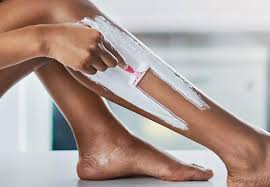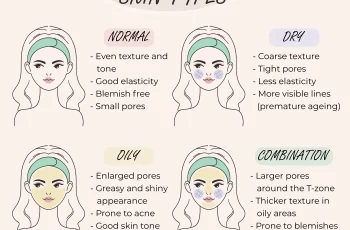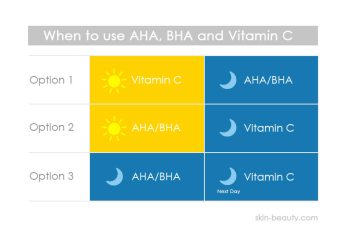Expert Tips for Shaving Your Legs, Armpits, and Body Parts
We’re heading into summer and our hem lengths are slowly starting to taper off. If you’re like me and haven’t been paying close attention to your legs over the past few months, I’m starting to think about all the touch-ups and corrections needed (and for me personally, feeling comfortable) the first day of wearing a mini skirt.
When it comes to personal care (including embracing natural!), there’s no right or wrong way to do things. But we spoke to our best friends at LUI – grooming and shaving experts – about the dos and don’ts when it comes to buying a razor.
LUI founder Rebecca Harding shares her 10 best tips for a perfect shave:
Invest in a quality razor you’ll love using.
“A great shave starts with a great tool. We spent three and a half years developing the LUI razor to improve your shave. The ergonomic design fits comfortably in your hand, and the soft-touch handle and perfectly weighted grip ensure control and precision. Five diamond-sharp blades, encapsulated in a moisturizing Vitamin E pad, ensure an extremely close shave and moisturize the skin. Inspired by the fluidity of our bodies, the razor is inspired by how women shave.”
Shave with the direction of hair growth, then shave against the direction of hair growth.
“Many of us think that shaving against the grain gives a closer shave, but this can cause regrowing hairs to curl back into the follicle, leading to ingrown hairs and inflammation. Instead, shave in the direction of hair growth first, “trimming” the hair as close to the skin as possible. This also gives the skin ample time to moisturize and soften. Once this is done, shave against the grain last.”
Perfect your technique.
“The key is to take your time. Shave with long, gentle strokes, applying only a little pressure. If you find yourself needing to apply pressure, it might be time to replace your razor heads. This conveniently leads us to the next point…”
Replace your razor heads frequently.
“A dull blade is a recipe for disaster. If your blade isn’t sharp enough, it will drag across the skin and you’ll have to go over the same spot over and over again. This can lead to irritation, razor burn, cuts and ingrown hairs. Even worse, overused razor blades can become contaminated with dead skin cells and bacteria, which can cause infection or breakouts. We recommend replacing your replacement blades after 6-8 shaves.”
Exfoliate regularly.
“Ingrown hairs occur when a hair becomes trapped beneath the surface of the skin. There is no follicle for the hair to grow from, so it curls back into the skin. Exfoliating regularly (1-3 times a week) pushes ingrown hairs out of the follicles and gently removes dead skin cells, excess sebum, dirt and grime that may be clogging the hair. Just make sure to moisturize your skin regularly; a really nourishing body cream or oil that keeps the skin barrier renewed, soothing without stripping.”
Use a nourishing shaving cream.
“Dry shaving is micro-traumatic to the skin, compromising the skin barrier and can lead to the fungal condition folliculitis, ingrown hairs, rashes, irritation and dryness. It’s important to use a formula designed for shaving (never use body wash or conditioner!). We developed our shaving cream not only to protect the skin while shaving, but also to give something back to the skin. Luxurious, pH-balanced, antioxidant formula. It contains Shea Butter to soften the follicles and skin, while Aloe Vera and Avocado Oil soothe and relax.”
Shave with warm water.
“Hot water can be extremely drying to the skin and strip it of its natural oils and moisture. So turn off the tap—just a little. Good news for showering: Warm water softens your hair, making shaving easier. And while you’re in the shower? The steam gently opens your pores.”
Clean your razor blades.
“Razor blades can become clogged with hair, shaving cream, and dead skin cells. Rinse your razor blades frequently every few times you shave for a smooth, easy shave.”
Let your razor air dry.
“Leaving your razor in the sink of a wet shower or tub is just as unappealing as it sounds. It can cause blade rust and bacterial growth. To ensure your razor lasts a long time, rinse your blades thoroughly after shaving and store them out of the shower. And don’t try to dry your razor with a towel or paper towel (which can damage the blade).”
Make shaving a ritual.
“At LUI, we believe shaving should be a more pleasant experience. Previously, hair removal was considered a chore, but we want to change that: we believe shaving should have a place in your self-care routine. That’s why we develop conscious products that improve your daily/weekly/monthly grooming routine, taking your body and the environment into consideration. (And they look great, too.)”
DQH Knowledge drop: In your 20s, your skin cell turnover decreases. (Cell turnover is a key component in keeping your skin youthful.) You know what else slows down? Your collagen production. Starting in your 20s, collagen decreases by about 1 percent per year. Should you want to prevent fine lines and wrinkles, start by eliminating behaviors that contribute to premature aging. “If it’s bad for you, it’s bad for your skin,” says dermatologist Michel Somenek.
“Cigarette smoking reduces blood flow to the skin and causes premature wrinkling and a dull skin texture. Making the repeated pursed motion to inhale can also cause smoker’s lines. Alcohol and recreational drugs are toxins for the skin that damage its cellular structure and DNA,” Somenek tells us. “The faster you eliminate vices while you are young, the better chance your skin and body have to recuperate.” Also, adopting an anti-aging routine in your 20s is key. After all, the best offense is a good defense. We spoke to Somenek and experts Joshua Ross and Audrey Kunin to find out more.
Keep reading for the best anti-aging products for your 20s, according to skincare professionals.
Sunscreen
“We all know that the sun is the number one cause of skin aging and starting the prevention in your 20s is very important,” Ross says. “The majority of your sun damage won’t start to appear until you’re in your 30s, so don’t wait until you see it surface or you’ll be behind the curve. Stay ahead of it with a good-quality zinc-based sunscreen worn daily.”
Farmacy Green Defense Daily Mineral Sunscreen
An invisible sunscreen with SPF 30, plus botanical extracts meant to protect skin with tons of antioxidants. Bonus: It’s clean and fine to use under makeup.
Bareminerals Complexion Rescue™ Tinted Moisturizer Broad Spectrum SPF 30
Although we recommend you use your SPF and moisturizer separately, we also understand moments when you don’t have time or energy for that extra step. For those times, this bareMinerals moisturizer is a great thing to have on hand.
Vitamin C Serum
“A great introduction to anti-aging is to start with a vitamin C serum in your morning skincare routine,” Ross says. “It’s a powerful antioxidant that will neutralize free radicals and brighten the skin.” He adds that it’s a great way to counteract the effects of the sun’s harmful rays, which, as previously mentioned, are among the biggest causes of premature aging.
Drunk Elephant C-Firma™ Vitamin C Day Serum
The Drunk Elephant C-Firma is a lightweight serum that promises to give skin a glow by combining the brightening powers of vitamin C with ferulic acid, l-ascorbic acid, and vitamin E. The included sodium hyaluronate is meant to replace hydration loss, so you shouldn’t have to deal with any irritation.
Sunday Riley C.E.O. Rapid Flash Brightening Serum
This potent serum is jam-packed with vitamin C (15 percent, to be exact), which means it’s a potential superstar at both brightening skin and dousing it in antioxidants.
Peptides
Using peptides on your skin has many benefits, says Somenek. “The skin barrier is what defends the body against pollution, UV rays, bacteria, and toxins. It can be damaged by several everyday factors. Using topical peptides aids in building a stronger barrier,” he says. “Peptides comprise elastic fibers, which are a type of protein. These fibers help to make skin appear taut and firm. Peptides can also help repair damaged skin, relieve inflammation, and even out skin tone. Some peptides can kill acne-causing bacteria that is common in 20-somethings.”
Kunin agrees, saying, “Peptides are an excellent entry point for supporting collagen.” She recommends looking for face and eye treatments that contain these collagen-boosting powerhouses.
Charlotte Tilbury Magic Eye Rescue Cream
This Charlotte Tilbury super-emollient eye cream has a base of coconut oil and shea butter (read: it’s incredibly hydrating). Botanicals plus peptides are meant to help reduce dark circles and boost collagen, respectively.
This creamy moisturizer serves up potent collagen-boosting peptides and pycnogenol, and antioxidant-rich vitamin C. “Instead of sitting on top of the skin, peptides penetrate the outer layer so they go deep. The ‘signals’ they send tell the cells to produce elastin and collagen, which are needed for youthful-looking skin,” explains Somenek.
At-Home Peel Pads
Remember that skin cell turnover fiasco we talked about earlier? One way to help support it is by exfoliating. “Exfoliation is important to help keep skin fresh and luminous,” Kunin says. She recommends using at-home peel pads as an easy and effective way to exfoliate.
“The goal in your 20s is to fight the slowing pace of cell turnover. It is wise to use products that gently exfoliate, yet still remove oil and other impurities. Products that have Alpha Hydroxy Acids (AHA) or Beta Hydroxy Acids (BHA) are a good choice.”
According to Somenek, you should only exfoliate two to three times a week. “People of all ages are guilty of over-exfoliating and that can be too much of a good thing,” he says.
Dermadoctor Kakadu C Intensive Vitamin C Peel Pad
A few swipes of this Derma Doctor powerful peel pad promise to leave your skin glowing and smooth, thanks to the seven (yes, seven) types of chemical exfoliants, including AHA and BHA. It also contains vitamin C via Kakadu plum extract for added brightening and antioxidant protection.
KEY INGREDIENTS Kakadu plum extract is sourced from the Kakadu plum, a fruit grown in northern Australia. It contains vitamin C, which restores the skin’s natural barrier, increases collagen production, and soothes irritation.
Dr. Dennis Gross Skincare Alpha Beta® Universal Daily Peel Pads
These are the gold standard of peel pads, with a cult following and over 900 five-star reviews on Sephora. They’re easy to use and contain a blend of anti-aging exfoliating acids.
Emollient Night Cream
“In your 20s, you need to start upping the hydration in your skincare routine. You may have been cautious of over-moisturizing because of acne in your teens, but as you enter your 20s, your skin transitions and becomes drier,” Ross says. “I recommend an emollient night cream added into your evening skincare regimen.”
“Twenty-somethings need to make sure that they are not using creams that will clog their pores and cause excess oil production,” says Somenek. Opt for non-comedogenic products.
Cerave Skin Renewing Night Cream
One great choice is the CeraVe Skin Renewing Night Cream, which is a non-comedogenic night cream that leaves skin soft and glowy. It combines the moisturizing powers of ceramides and hyaluronic acid.
RoC Retinol Correxion Max Hydration Creme
“The best night cream ingredients contain retinol, benzoyl peroxide, and/or salicylic acid or hyaluronic acid. The goal is to moisturize, yet remove excess oil,” says Somenek. This Roc Retinol Correxion cream fits the bill as it contains both hyaluronic acid and retinol so it promises to moisturize while also being non-comedogenic.



